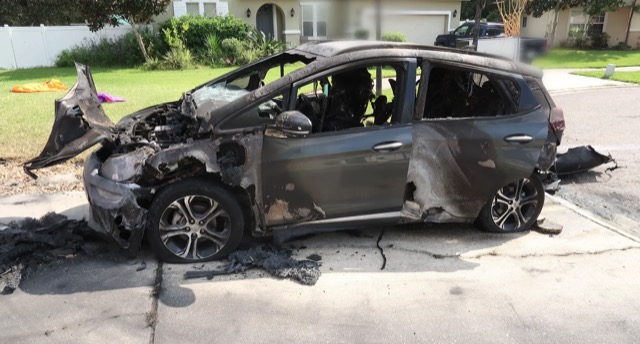Another urban myth:
There has been a huge amount of publicity regarding Electric Vehicles spontaneously catching fire. While an EV battery, when it DOES ignite, can be difficult to extinguish, these occurrences are extremely rare (and mostly caused by a serious collision). Much of the so-called “news stories” about EV fires can be attributed to the Petroleum Lobby (again), in a vain attempt to discredit EVs, and hopefully scare people into continuing to buy ICE (Internal Combustion Engine) cars.
Statistically speaking, fully electric vehicles have been deemed far safer than both hybrids and gas cars; they are far less likely to catch fire, with just 25.1 fires per 100,000 sales. That’s compared to 3,474 hybrid fires and 1,529 ICE fires per 100,000 sales respectively. The relatively high incidence of hybrid fires is most probably attributable to the fact that many hybrids are older, and use battery technology that is relatively outdated and less reliable (also, they’re constantly recharging while driving, which drives down battery efficiency over time, and can cause short-circuits, leading to fires). At this point, it’s also worth mentioning that, unlike pure electric vehicle, both hybrids & ICE vehicles have a tank full of an incredibly inflammable material (gasoline or diesel), which, when mixed 50/50 with air, becomes the equivalent of a molotov cocktail! So, a short-circuit on a hybrid car is much more likely to end in a raging inferno.
It’s true that some cars have had a less-than-brilliant track record: for example, the Chevy Bolt suffered a number of battery issues since it was first released, caused predominantly by GM purchasing batteries from an unreliable source. They have since remedied the problem, and (at great expense), they have either bought the faulty cars back from their owners, or fixed the existing batteries. As result, the new Chevy Bolt and Bolt EUV are possibly the best value EVs on the market ! I know I’d buy one!
EV battery technology is advancing at a furious rate. With the price of rare metals (such as cobalt) rising exponentially (not to mention the humanitarian issues of mining & extraction processes), research has turned to alternative components. Tesla are now using LFP (lithium ferrous phosphate) batteries in all their new cars: apart from replacing hard-to-source cobalt with iron (already ubiquitous), LFP batteries can support many more charging cycles, and also charge to 100% without suffering “battery stress.” In fact, BYD (one major source of LFP batteries) now warranty their batteries for 500,000 km (310,000 miles).
Several companies are also in the process of developing solid state batteries: these use a solid electrolyte, and boast greater power density (amount of power-to-weight), lighter materials and smaller size. They are also less flammable!
Such is the potential demand for batteries in the developing EV market, it’s almost impossible to keep up with the technological advances currently occurring. I’ve witnessed massive improvements in the last 4 years. Who knows how steep the development curve will get in the next 3-5 years?
